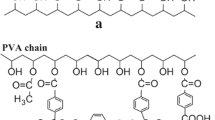Abstract
Unsaturated acrylic resins such as hexanediol diacrylate (HDDA) are widely used in coating and adhesive materials because they provide excellent bonding properties and cosmetic surface finish. Styrene (St) monomer is often added to reduce the resin viscosity and facilitate acrylic reaction. In this study, we used an integrated analytical approach including differential scanning calorimetry (DSC), Fourier transform infrared (FTIR) spectrometry, and rheometry, to monitor the kinetic and rheological changes of the diacrylic-styrene cross-linking polymerization at 100, 110 and 120 °C. Tert-butyl peroxybenzoate (TBPB) was used as initiator. It was found the reaction system gelled at <2 % conversion and overall conversions could only reach 94–95 % because of resin vitrification, suggesting most addition reactions were diffusion-controlled due to very low molecular mobility in the gel stage. Although conversions of HDDA and St, calculated from respective characteristic C=C absorption peak areas from isothermal FTIR sepectrum, followed the azeotropic co-polymerization pathway closely, styrene consumption was favored because of the lower molecular weight and higher mobility of styrene making it transfer comparatively faster than HDDA with pending double bonds.









Similar content being viewed by others
References
Vijayendran BR, Derby R, Gruber BA (1992) Aqueous polyurethane-vinyl polymer dispersions for coating applications. Patent US5173526
Shukla V, Bajpai M, Singh DK, Singh M, Shukla R (2004) Review of basic chemistry of UV-curing technology. Pigm Resin Technol 33(5):272–279
Gungor A, Kayaman-Apohan N, Mert A, Kahraman MV (2008) Preparation and characterization of light curable hybrid coating: its potential application for dental restorative material. J Polym Res 15(5):389–395
Chen W-H, Chen P-C, Chen P-S, Wang S-C, Yeh J-T, Chen K-N (2009) Hydrophilic UV-curable PU resins for PET micro-fiber applications. J Polym Res 16(4):329–339
Cheng C, Bai X, Liu S, Huang Q, Tu Y, Wu H, Wang X (2013) UV cured polymer based on a renewable cardanol derived RAFT agent. J Polym Res 20(7):1–11
Kaewpirom S, Kunwong D (2012) Curing behavior and cured film performance of easy-to-clean UV-curable coatings based on hybrid urethane acrylate oligomers. J Polym Res 19(11):1–12
Tyagi AK, Choudhary V, Varma IK (1991) Effect of reactive diluents on curing behaviour and thermal stability of urethane methacrylate. Die Angew Makromol Chem 189:105–115
Nuinu P, Pivsa-Art S, Hinchiranan N (2012) Mechanical and aging resistance performance of acrylic sheets containing EPDM-graft-poly(styrene-co-methyl methacrylate). J Polym Res 19(2):1–12
Liu T, Pan X, Wu Y, Zhang T, Zheng Z, Ding X, Peng Y (2012) Synthesis and characterization of UV-curable waterborne polyurethane acrylate possessing perfluorooctanoate side-chains. J Polym Res 19(2):1–8
Abrams LM, Castro JM (2001) Powder coating of sheet molding compound (SMC) body panels. Polym Compos 22(5):702–709
Mark HF, Kroschwitz JI (1984) Encyclopedia of polymer science and engineering. Wiley, New York
Kunwong D, Sumanochitraporn N, Kaewpirom S (2011) Curing Behavior of a UV-curable coating based on urethane acrylate oligomer: the influence of reactive monomers. Songklanakarin J Sci Technol 33:201–207
Lee BH, Choi JH, Kim HJ (2006) Coating performance and characteristics for UV-curable aliphatic urethane acrylate coatings containing norrish type I photoinitiators. J Coat Technol Res 3:221–229
Wang F, Hu JQ, Tu WP (2008) Study on microstructure of UV-curable polyurethane acrylate films. Progr Org Coat 62:245–250
Yang H, Lee LJ (2001) A kinetic model for free-radical crosslinking co-polymerization of styrene/vinylester resin. Polym Compos 22:668–679
Mathakiya I, Rao PVC, Rakshit AK (2001) Synthesis and characterization of styrene–acrylic ester copolymers. J Appl Polym Sci 79:1513–1524
Acknowledgments
The authors would like to thank Mr. Elliott Strauss of Omnova Solutions Inc. in Akron, Ohio for providing the initiator, Tert-butyl peroxybenzoate (TBPB) for this work.
Author information
Authors and Affiliations
Corresponding author
Rights and permissions
About this article
Cite this article
Ouyang, X., Ko, SH., Castro, J. et al. A kinetics study of diacrylic-styrene crosslinking copolymerization. J Polym Res 22, 148 (2015). https://doi.org/10.1007/s10965-015-0793-4
Received:
Accepted:
Published:
DOI: https://doi.org/10.1007/s10965-015-0793-4




